Ever wondered what regenerative farming is and how it compares to other farming approaches? Vicki Hird, The Wildlife Trusts’ new strategic lead on agriculture, looks at this farming buzzword and what it means.
Regenerative farming as a phrase has been used since the 1980s, but it is only in the last 10 years that it has gained a higher profile and a far bigger following. As the name suggests, it is an approach to farming that, in theory, allows the land, the soil, water, nutrients, and natural assets to regenerate themselves, as opposed to conventional approaches to farming that can deplete these natural resources.
It is used in marketing by corporations and prominent members of the food and farming industry. In the corporate rush to reduce the environmental or carbon footprint of their food supplies, they are making big demands on farmers that may be risky, expensive and involve new knowledge – especially for smaller farms. I wrote, with some scepticism, about these in a blog in a previous role, and others are sensing that the regenerative claims by corporations are weak, with unquantifiable targets and a lack of support for farmers.
What are regenerative tools?
‘Regen’, as it’s often called, lacks a formal, independent definition. It can mean different things depending on who is using it, and what the context is. As a basic rule it should involve some mix of the following farm tools:
- limiting soil disturbance
- maintaining soil cover
- fostering agricultural diversity and rotations
- keeping living roots in the soil
- integrating livestock and arable systems
But not all ‘regenerative farmers’ use these and the use of these tools does not automatically mean it’s a good farm system overall or guarantee nature protection or recovery. Nor does it ensure that drivers of harm beyond the farmgate are tackled.
In addition, none of these are ‘new’ tools. Most of these tools have been developed, used and fine-tuned for decades by farmers in agroecological systems (see below to discover what this means) such as organic and permaculture schemes, as well as the Jordans Farm Partnership, which uses a bespoke and thorough farm conservation plan in partnership with Wildlife Trusts to deliver nature outcomes.
BOX Agroecology – what is it?
Agroecology is sustainable farming that works with nature. Ecology is the study of relationships between plants, animals, people, and their environment – and the balance between these relationships. Agroecology means applying ecological concepts and principals in farming. Many approaches, including organic, permaculture and biodynamics, already apply many of these concepts. It promotes farming practices that mitigate climate change, reduce chemical inputs, work with wildlife, and put farmers and communities in the driving seat.
A soil focus
Soil is key. As the basis for most food production, its health is far higher up the agenda than it was even just a few years ago. Conservation groups are now talking about the nature and wildlife below our feet, the extraordinary and complex plant, fungi, springtail and worm interactions. I’ve witnessed a transformation of the debate and a huge growth in interest in soil from farmers and government. Soil chats and learning are rich at the Groundswell event – a fabulous farmer-led networking initiative by John Cherry and his family, who wanted to address soil loss and damage. This has become the big annual ‘regen’ event, embodying the essence of a sector growing together.
Limiting soil disturbance is one area of contention between regen and other approaches. Ploughing is now seen as the big villain, with impacts ranging from soil compaction and biological harms to fossil fuel use and damage to the rhizosphere (the area of soil influenced by plant roots and their interactions). These are all fair arguments, but it depends absolutely on your whole farm system: your soil type, elevation, climate, and your approach to rotations. It is really a site/field/location/approach specific issue. If you run an intensive farm, ploughing does do much harm to an already damaged soil system. So, using minimum or no till approaches will be automatically restorative.
The tyranny of yield
Another big area of contention is the impact on yields of moving to regenerative, agroecological, or similar systems. This is misleading and inadequate, not least because it is not often true, but also ignores the reality that maintained or higher yields are no longer a priority outcome. We produce enough food globally to feed at least 10 billion. We waste at least 30% of the food produced and use an even higher proportion highly inefficiently to feed pigs, poultry, dairy cows, and cars. The evidence is clear that we need to change what, where, and how we grow food and how that food is used. Nature depletion, runaway climate change, and polluted soils, rivers and seas are just three of the reasons why.
A new set of long-term experiments on singular regenerative approaches, such as no-till and diversified cropping, reveals that they are not a short-term fix for more holistic sustainable food production systems. It’s good to see that these rotation experiments don’t focus on yield alone and that they look at the synergies and trade-offs of each approach.
Farming for the future
Agriculture will be a key part of the solution for nature loss. Farmland accounts for around 69% of land use in the UK, so there is huge scope for positive change in UK agriculture, securing nature and climate recovery – but it requires system change. The Wildlife Trusts believe that there must be a fundamental shift away from industrial agricultural practices towards an approach which sees farming and the environment as mutually beneficial and interdependent.
So, a high level of ambition and transparency to deliver nature friendly farming is needed in regenerative systems, alongside fair deals for farmers. We need public support for farm systems that produce food using nature friendly methods, reducing or eliminating imported inputs like pesticides, fossil fuels, and inorganic fertilisers, whilst also providing public goods such as nature restoration and public engagement. Large scale, corporate-led regenerative programmes may fail given the imperative to drive up yields, keep raw material costs low, and secure profits in a highly competitive, increasingly processed food system.
Labels and marketing
Do we need a new formal ‘regen’ standard and food label so we can trust that the product is from a regenerative farm? This is tricky. There is compelling evidence that some legally certified labels – like free range eggs or organic, for example – do work and drive markets towards better outcomes. But they have legal status. There are also so many labels around. How many can you read online or as you scoot round the supermarket, toddler in tow?
One thing that any accreditation scheme must do is spread the risk and benefits of a good system, so farmers do not take all the risks of changing their system and getting accredited, whilst gaining no reward. The schemes should also provide the transparency needed to ensure all those in the chain involved with this ‘better’ product get paid a fair price, and so the scheme standards are clear to everyone, including the consumer.
Unlike regen, the agroecology model is about more than the farm system. It covers fair supply chains, a decent living for farmers, and healthy produce – and all these matter for nature. Agroecology principles have been agreed by the global small farmer organisation La Via Campesina, and by the Food and Agriculture Organisation of the United Nations (FAO) without being overly prescriptive, as farming cultures, systems and environments differ widely.
In summation we need to carefully watch this space, call out greenwashing, ensure strong regulation of carbon and regenerative accreditation or offsetting schemes, support farmer efforts and maintain strong calls for whole system approaches that genuinely deliver for nature restoration and climate resilience.



